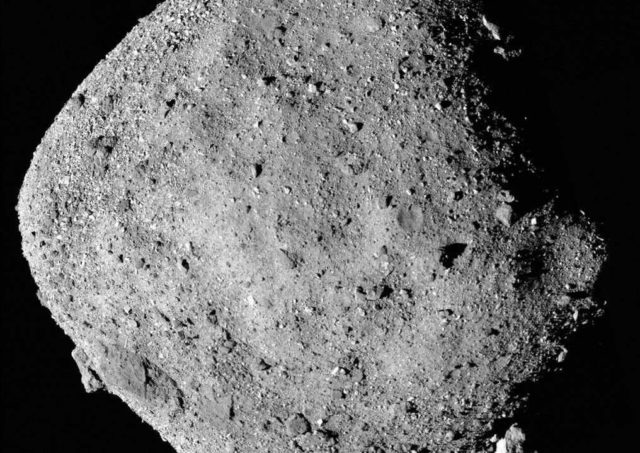
University-led space mission gets green light to land on second asteroid Bennu, OSIRIS-REx (NASA's Marshall Space Flight Center/Flickr)
OSIRIS-REx has already put more than 2 billion miles on its odometer, but NASA hopes to squeeze one last road trip out of the history-making spacecraft.
NASA has extended the University of Arizona-led mission beyond next year so it can study a second nearby asteroid called Apophis.
First, though, OSIRIS-REx must complete its primary objective: deliver a capsule back to Earth filled with rocks and dust it collected from the asteroid Bennu in 2020.
That is on track to happen on Sept. 24, 2023, as the unmanned craft the size of a passenger van swoops past its home planet.
Once the sample-return capsule has been safely collected from the Utah Test and Training Range west of Salt Lake City, the spacecraft will be given a new name: OSIRIS-Apophis Explorer, or OSIRIS-APEX for short.
At that point, the original mission team will split in two, with one group going off to sift through the booty from Bennu while the other steers the spacecraft to its next target.
The UA’s Lunar and Planetary Laboratory will oversee both efforts. Regents Professor Dante Lauretta will stay on as principal investigator for the sample-return operation, while assistant professor Dani DellaGiustina will be placed in charge of OSIRIS-APEX.
“We were stoked to find out the mission was extended,” said DellaGiustina in a written statement. “Apophis is one of the most infamous asteroids.”
At nearly a quarter of a mile wide, the space rock raised alarms when it was first discovered in 2004 by scientists at Kitt Peak National Observatory because it appeared to be on course to collide with the Earth in 2029.
Subsequent observations have since ruled out an impact for the next century at least, despite two more close approaches in 2036 and 2068.
But the near-miss seven years from now could be pretty unsettling. When Apophis streaks past on April 13 of that year, scientists predict it will come within 20,000 miles of the surface — that’s less than one-tenth the distance between the Earth and moon, closer than the orbit of geosynchronous satellites.
“People in Europe and Africa will be able to see it with the naked eye. That’s how close it will get,” said DellaGiustina, who currently serves as deputy principal investigator for OSIRIS-REx.
Bennu also poses a risk to Earth, but not until the late 22nd century.
Orbital projections developed by Lauretta and other researchers give a 1-in-2,700 chance of impact on Sept. 24, 2182.
A devastating collision is also possible — though even more unlikely — in 2187, 2192, 2193 and 2194, as the Earth crosses paths with the asteroid roughly the size of Pusch Ridge in the Catalina Mountains.
Whether Bennu ultimately hits our planet will be decided by an earlier encounter in 2135, when the asteroid sweeps past at roughly half the distance to the moon.
By approving an extension for OSIRIS, NASA has agreed to spend up to $200 million more on a mission that has already cost more than $1.1 billion.
The spacecraft is scheduled to begin its trip to Apophis about 30 days after its rendezvous with Earth in September of next year.
The probe is not set up to collect a sample from the second asteroid, but it will spend 18 months studying Apophis in detail. That science mission includes a maneuver that will put OSIRIS-APEX close enough to stir the asteroid’s surface with its thrusters, revealing whatever material lies beneath.
Scientists also hope to learn more about how the Earth’s gravitational pull might affect Apophis during its close approach in 2029.
The extended mission should provide current and future UA students with an unparalleled learning opportunity like the one that helped propel DellaGiustina to where she is today.
“Dani first started working with us in 2005 as an undergraduate student. To see her take on the leadership of the mission to asteroid Apophis demonstrates the outstanding educational opportunities at the University of Arizona,” Lauretta said. “I couldn’t be prouder of Dani and the APEX team.”
___
(c) 2022 The Arizona Daily Star Distributed by Tribune Content Agency, LLC




